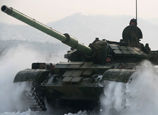
At the beginning of this year, China and India expressed their mutual desire to deepen bilateral cooperation, achieve common development, and create a better future. This reflects two countries' appreciation on the importance of developing interrelations.
The Times of India recently published an article saying in 2012 "China-India relations encountered a record-low number of problems", "the communication channel between the two governments was unimpeded", and "both sides aimed at strengthening interaction in order to better understand each other". Such comments are a true reflection of the current status of China-India relations attributed to the positive energy generated by the sustained and stable development of the relations.
China-India relations have achieved leap-forward development in the past 10 years. The two countries established a strategic cooperative partnership for peace and prosperity. The bilateral trade volume soared from about 3 billion U.S. dollars at the beginning of this century to about 80 billion in 2012. China has become the largest trading partner of India and India has also become the largest trading partner of China in South Asia.
China-India relations are showing new characteristics. Border problems have been effectively controlled. However, there are some frictions in the technical aspect and worries over the trade imbalance amidst the development of economic and trade cooperation. Meanwhile, the international influence of the two countries is continuously growing. There has been increased number of discussions over the extension of the "spillover effect" of China-India relations to the third parties and oceans.
However, the problems that emerged in the process of strengthening economic and trade cooperation are essentially different from border disputes. The former type of problems is precisely the reflection that the bilateral relations are further deepened, developed, and normalized. The constant development of the economic and trade relations between any two countries needs a reciprocating process of successively encountering problems and solving them. The leaders of the two countries are confident that the total bilateral trade volume will be able to achieve 100 billion U.S. dollars in 2015.
The in-depth advance of China-India economic and trade cooperation is closely related to the successful negotiations between the two countries which resulted in the settlement of political guiding principles in solving border issues and the maintenance of peace and tranquility at the border area. The sound development of economic and trade relations is conductive to the increase of mutual trust and the negotiated settlement of border issues.
China and India are both regional dominant powers and have their own geopolitical interests to consider in promoting relations with neighboring countries. But as long as such considerations aim at pursuing long-term peace in Asia, instead of rivaling other dominant powers in the region, and are conducive to win-win cooperation in the region as a whole, they will undoubtedly generate positive spillover effect, contribute to the development of Asia, and not be dominated or interfered by external forces.
China and India are both ancient civilizations and big developing countries. It is the most important event in the history of international relations in the 21st century for the two countries to have embarked on the road of revitalization at the same time. The world has enough space as well as the need for the common development of China and India. The two countries have shared responsibility and interests to cherish, maintain, and develop sound mutual relations. China will continue to attach importance to China-India relations and look forward to closely cooperating with the Indian side to create a better future of China-India relations.
Read the Chinese version: 世界需要中印共同发展; Source: People's Daily; Author:Zhong Sheng
















 'Collective children's weddings' held in kindergarten
'Collective children's weddings' held in kindergarten


![]()
